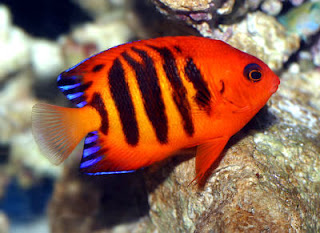If you are the ornamental fish hobby I think most of the names most beautiful ornamental fish in the world you may already know. But for those of you who do not like fish ornamental fish from the list below only the regular fish that seemed not so valuable. About the price for this type of ornamental fish is unquestionable because it is definitely very expensive.
These fish belongs in a favored ornamental fish lovers and ornamental fish keepers. From one of a list of fish including the rare fish that are not found in Indonesia, so to have it of course has to spend quite a bit.
To find out more about the names and types of fish most sought after and desirable ornamental fish lovers and is the most beautiful ornamental fish and ornamental fish ranks the highest in the world.
Please have a look at the picture of fish below, where do you think the most beautiful fish rmasuk, part of the 10 lists the names and types of ornamental fish below by you:
This fish is also called Zebrafish. Spine that have venom that is very painful and quite effective. People who maintain it certainly should be careful if you want to clean the tank.
ikan ini tergolong dalam family Surgeonfish, yang memiliki pisau kecil dari zat kapur yangg dapat disembunyikan di depan sirip ekornya. Pisau kecil ini digunakan terutama untuk sistem pertahanan dalam menghadapi predator.
These fish belong to the Angelfish. These fish can be kept in an aquarium in the house and can survive well in the habitat (hardy)
This fish has a close relationship with the Coral Beauty. Its just like Coral Beauty, but nature does not 'like' Coral Beauty.
There are two varieties of this species: mandarin fish standards and Psychedelic Mandarin. The standard usually have patterns and colors that better than psychedelic. The price ga over $ 20 per head, but the problem is the food.
So named because of the shape of bird beak-like mouth. They use their beak-like mouths to break down and eat the small invertebrates that live in the coral. Usually they will take a piece of coral or sea sand and then chewing invertebrates that are on it, and then discard the rest.










Tidak ada komentar:
Posting Komentar